Last Updated on August 3, 2024
Might Campania’s real treasure be land-locked Irpinia?
Estimated reading time: 8 minutes
The Montevergine Sanctuary, in Italy’s region of Campania, continues to be a traditional stop on one of the oldest pilgrimage routes to the Holy Land. Although it’s not yet one of the top places to visit in Italy, it is amazing nevertheless.
From the cliff of the Sanctuary, on the Paterno massif overlooking the Province of Avellino, you can see clear to the Adriatic off the coast of Puglia.
At the heart of Avellino is an ancient district known as Irpinia. It is one of the most fertile wine-growing regions in Italy. Some say it is a wine paradise dating back to the ancient Greeks.
Today, despite Campania being known for such astonishing places as Pompeii and Herculaneum, the bad-boy city of Naples, and the romantic Amalfi Coast, its true treasure may be land-locked Irpinia.
In fact, on a recent small group familiarization trip I discovered it might well be Italy’s next sweet spot.
A Bounty of Castles and Wineries
Set between the Mediterranean and Adriatic Seas, Irpinia is little known among American travelers. Nevertheless it’s only about an hour’s drive east of Naples.
Throughout history the area has been inhabited by prideful people. They swiftly rebuilt their cities after the Romans flattened them and rebuilt them again following the devastating earthquake of 1980. That catastrophe killed almost 3,000 and left 100 times that number homeless.
Today, though, as in the past, within the Taurasi area of Avellino visitors continue to trip over castles, numerous wine cellars and open doors at wineries. The latter include such notables as Mastroberadino and Feudi San Gregorio, as well as emerging wineries such as Marianna. They all produce a great selection of award-winning zesty whites and fruity, intense reds.
Irpinia Farm to Table
As in other areas of Italy, the farm to table concept is nothing new in Irpinia. We had our lunch at Nonna Pina, a country house in the town of Bagnoli Irpino. It consisted of products grown just below the terrace where we dined. The rest of the meal, including the salami, cheeses, wine, truffles and wheat for the pasta, originated within a kilometer of our table.
Wineries range from the small Marianna Grottolella mentioned above, run by a father and daughter, to the oldest winery in the region, the world- famous Mastroberardino of Atripalda with its Radici Resort. Other area notables include Feudi di San Gregorio in Sorbo Serpico (a town that’s also home to Michelin-starred restaurant Marennà), Caggiano of Taurasi, and Molettieri of Castelfranci.
We also visited the sprawling vineyards of Mastroberardino, the oldest vineyard in Irpinia. There we discovered who the real “guardians of the grape” were. Rose bushes are planted at the start of each row of grapes. They areas decoys for diseases before they attack the vines, thus affording vintners time to protect the vines.
Lunch at the Morabianca in the Radici Resort is delicious. And if you are in the small town of Rocca San Felice you’ll find that La strada dei formaggi e dei mieli d’Irpinia (the Cheese and Honey Route) begins just outside it. Among the particular cheeses from this area is the carmisciano that carries just a hint of ash as the grass the sheep eat grows in fertile volcanic soil.
Rebuilding Piece by Piece
Like several other towns in the region, Rocca San Felice was also rebuilt from the original stones piece by piece. Today it is home to La Ripa, an outstanding restaurant that features a small museum. Likewise, the vineyards of Antonio Caggiano underwent major restoration. It was transformed into an unusual cellar that includes a museum underground.
During its rebuilding experience, Castelvetere Sul Calore, a historical village, embraced the concept of Albergo Diffuso. That’s a term almost impossible to translate literally, although meaning “the town becomes the hotel.”
There locals manage the historical buildings to create an unusual form of hospitality. There are 17 modern guestrooms in a warren of old stone buildings. There’s also a café and a meeting space within a few feet of each other. And, as one might suspect, a campanile or bell tower right in the heart of town. The experience renders a sense of authenticity.
In Irpinia, Transforming a Castle to a B&B
Following the earthquake, the medieval village of Morra de Sanctis transformed part of its castle complex into a B&B. It also includes a meeting space and large dining rooms with regional menus.
In the town of Mirabella Ecolano, everything has been restored but the clock on the Church tower. It has been allowed remain at that terrible time. Visitors to Mirabella Ecolano can also see and appreciate the traditional craft of “intrecciature.” It’s the art of weaving straw into monuments, sculptures and floats used in religious processions.
The small village of Nusco, a town that escaped the earthquake’s damage, has is a historical center, a museum dedicated to religious artifacts. It also has one dedicated to the emigrants who left the town. Today, there is a flourishing social club of immigrants from Nusco in Long Island City, New York.
A Feast Day Just About Every Day
The Bagnolese (bahn yo lazee) – the locals – are preparing for the feast of La Madonna della Grazia; we keep running into such feast days. By autumn, the time of the vendemmias or grape harvests would dominate the season as will the Feast of the Chestnuts and Black Truffles at the end of October with a preview of the local cheeses in the Piazza Leonardo Di Capua.
Stefania Gargone of Settimo Cielo, one of the organizers of our trip, says, “There is a feast day just about every day of the year. In summer the calendar is full with colorful religious events…you could literally go from one feast to another tasting totally different dishes at each one.”
Trufffles and Chestnuts in Irpinia
Truffle expert Signor Lenzi also lives and thrives in the town of Bagnoli Irpino where we learned about black, white, and organic truffles, as well as discussing which make the best foragers – pigs or beagles – to scout out the black gold. Following a generous tasting of various truffle butters and creams, we trailed off with purchases in hand, taking home more than a memory of the flavors.
Though the chestnut forests are sparser than in the past, the harvest is still sustainable. Facing what seems to be an unstoppable blight has brought Irpinia’s production almost to its knees but, fortunately, chestnuts are a hearty crop. The nearby town of Montella is famous for a nut born inside a hairy outer skin, and its products now include chestnut flour. Ith is naturally gluten-free but at one time was a lower-grade flour.
Evaluating Wine in Irpinia
The taste of the region begins in the nose, trickles down the throat and makes its way to your memory. This is how vintner Salvatore Molettieri describes how one should taste and evaluate wine. “It must reach your body’s temperature and then you will know if this wine is for you or maybe for someone else,” he told us. “Never keep drinking if it burns your throat even for a moment.”
Food and wine lovers, aficionados and not necessarily experts, will find programs around Irpinia to be educational and fun. None of those who peopled these special places our small group visited were intimidating; all were welcoming and were wonderful teachers encouraging students to get in touch with their tastes and passions.
Visit Irpinia and you’ll have the names of DOCG wines – Aglianico, Fiano di Avellino, Greco di Tufo and Falanghina – tripping off your tongue in no time.
If you go:
Principals Stefania Gargone and Vittorio Curtarello of Settimo Cielo Tours organized the familiarization tour in which the author participated.
Other organizers included Tour de Forks (www.tourdeforks.com); Feast on History; the Hotel de La Ville, Avellino (www.hoteldelavilleavellino.it) and Borgo di Castelvetere (www.borgodicastelvetere.it)

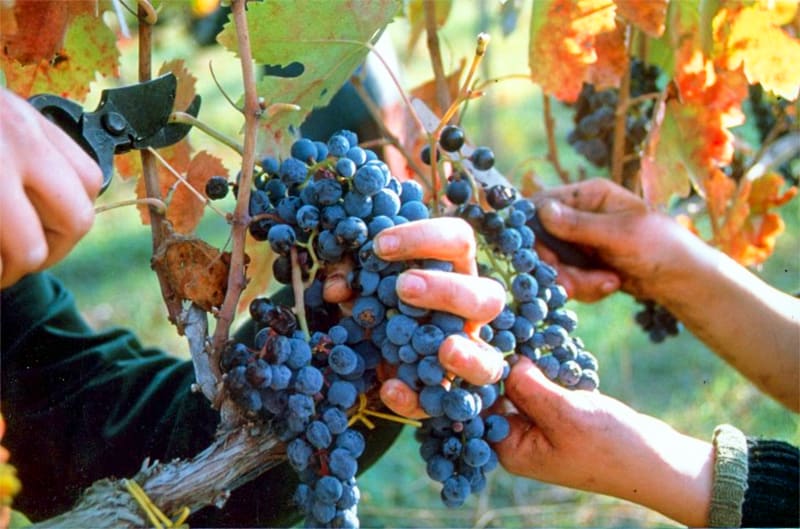
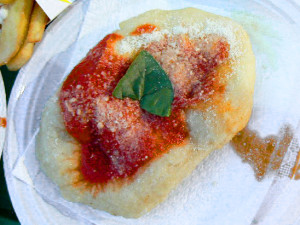
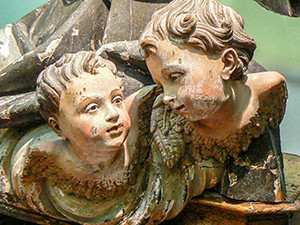
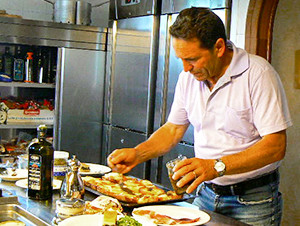
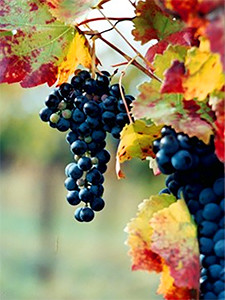
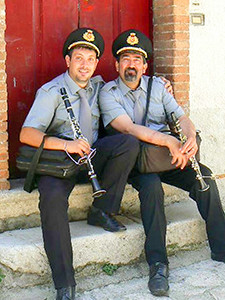
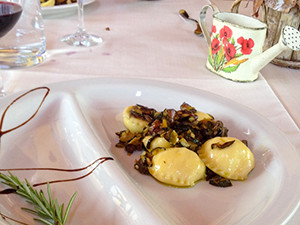
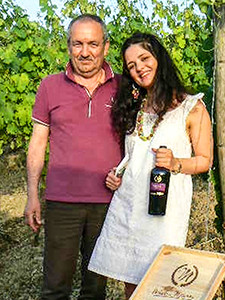
Thanks for this article….definitely one of Italy’s best places to travel. Great photos!
Ciao, I hope to travel to Irpinia next May. I will have about 4days in this area. I would appreciate if you could recommend most beautiful places to stay and photograph. Grazie. Shelly Wolf . [email protected]
Dear Marie. Thank you for this article. I was born in Sant Angelo Dei Lombardi and have been an ardent advocate for Irpinia for as long as I can remember. I have been to Tuscany and I truly believe that Irpinia has by far more natural beautiful landscapes, mountains and scenic views than does Tuscany. I have tried in the past to entice, and invited travel writers to come to Irpinia and see if they see what I see but I have not been successful. I still have a house in Sant Angelo Dei Lombardi and will be going back this October 22nd through November 12. This is a time of the year when there are 3 feasts called le Sacre. “ Le feste Della sacre” (feasts of the sacred) is essentially several day long feasts, essentially giving thanks for the areas bounty and I believe the practice dates back to pagan days. The 3 town’s main participants celebrating their bounties, are Montella (la sagar della castagna) which celebrates its prized Chestnuts; Bagnoli Irpino ( which celebrates la Sagra del Tartufo) which is their black truffle and Sant Angelo Dei Lombardi which celebrates, la Sagra Delle Sacre which celebrates all the specialties from the other areas of Irpinia. If you wanted to actually attend these 3 Sagre, , I would be willing to pay for your stay at Villa Mazzei right in Sant Angelo Dei Lombardi and many of your meals can be had at Residenza Ruotolo which is just a few minutes walk from Villa Mazzei. This 4 week festival, two weekends in Montella; one in Bagnoli Irpino and one in Sant Angelo, are weekends filled with a cornucopia of foods that are incredibly delicious and totally unknown to some. Also many of the best regional winemakers sell their best wines for incredibly cheap prices. My purpose in investing in paying for your stay at Villa Mazzei is born out of a sense of obligation towards Irpinia and it’s people having emigrated to the United States at the age of 11 and having found fortunes that were beyond my wildest expections. I therefore feel that I must lend a hand to my people with the goal to uplift and allow to be discovered the last remaining smidgen of undiscovered Italy. If you want to discuss further, please feel free to call me. Best. Angelo
Angelo,
Thank you for your comments about Irpinia. It’s obvious that you love the area as much as our author does. It’s not good, however, for you to ever leave personal information on a website. Because of this, I have deleted your telephone number from public view on your comment, and will forward it to the author.
Best regards,
Jim